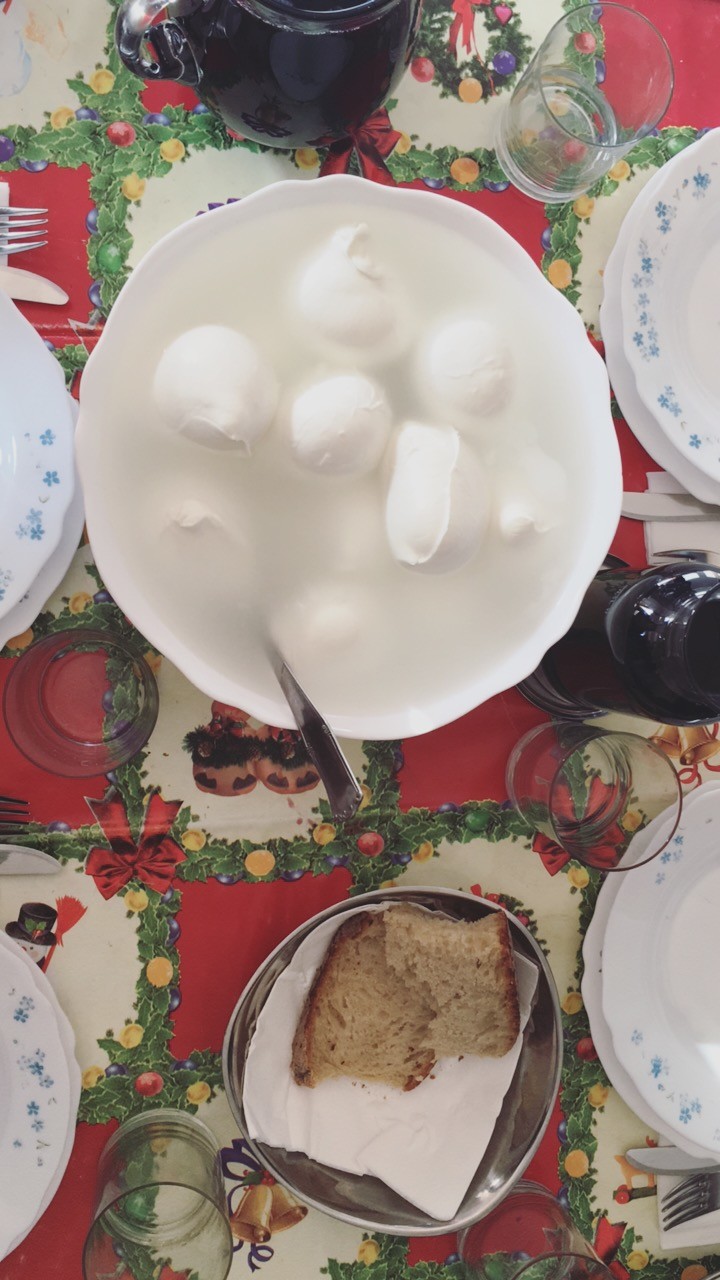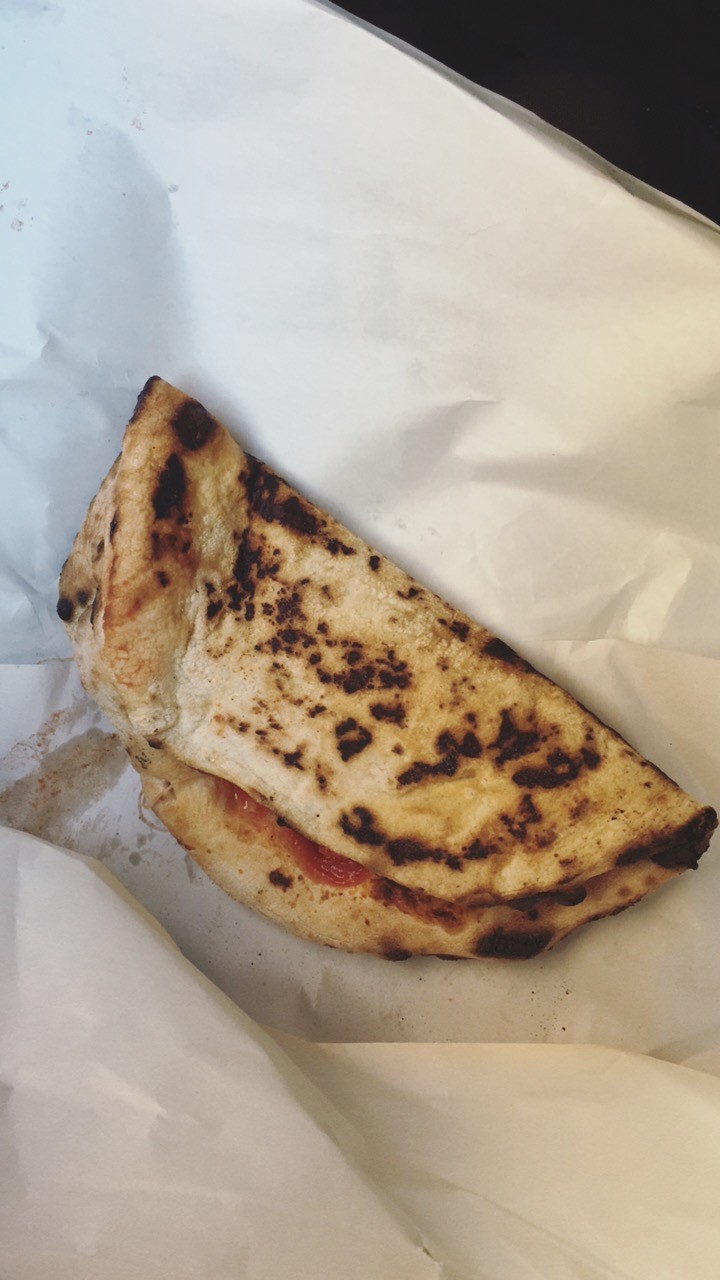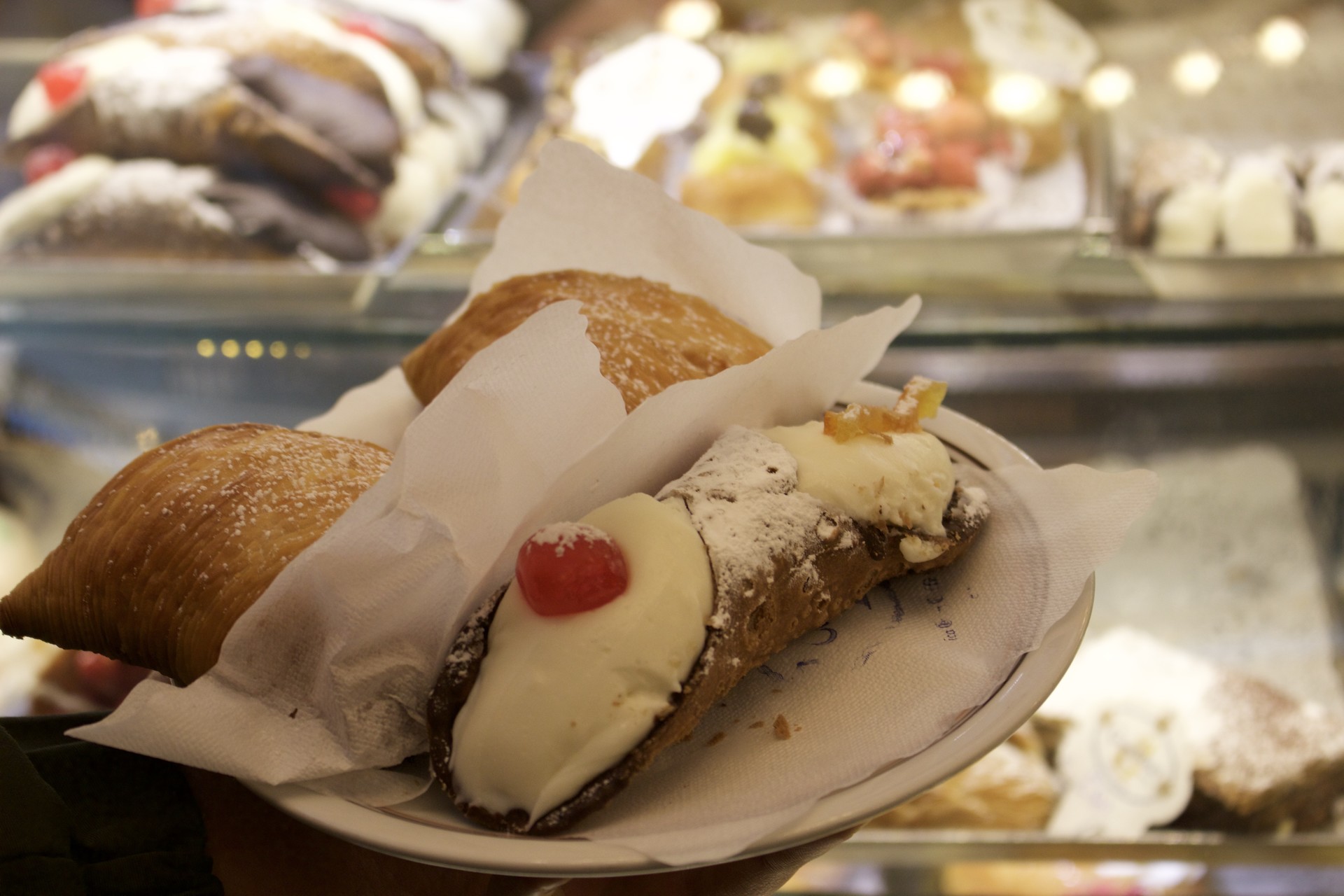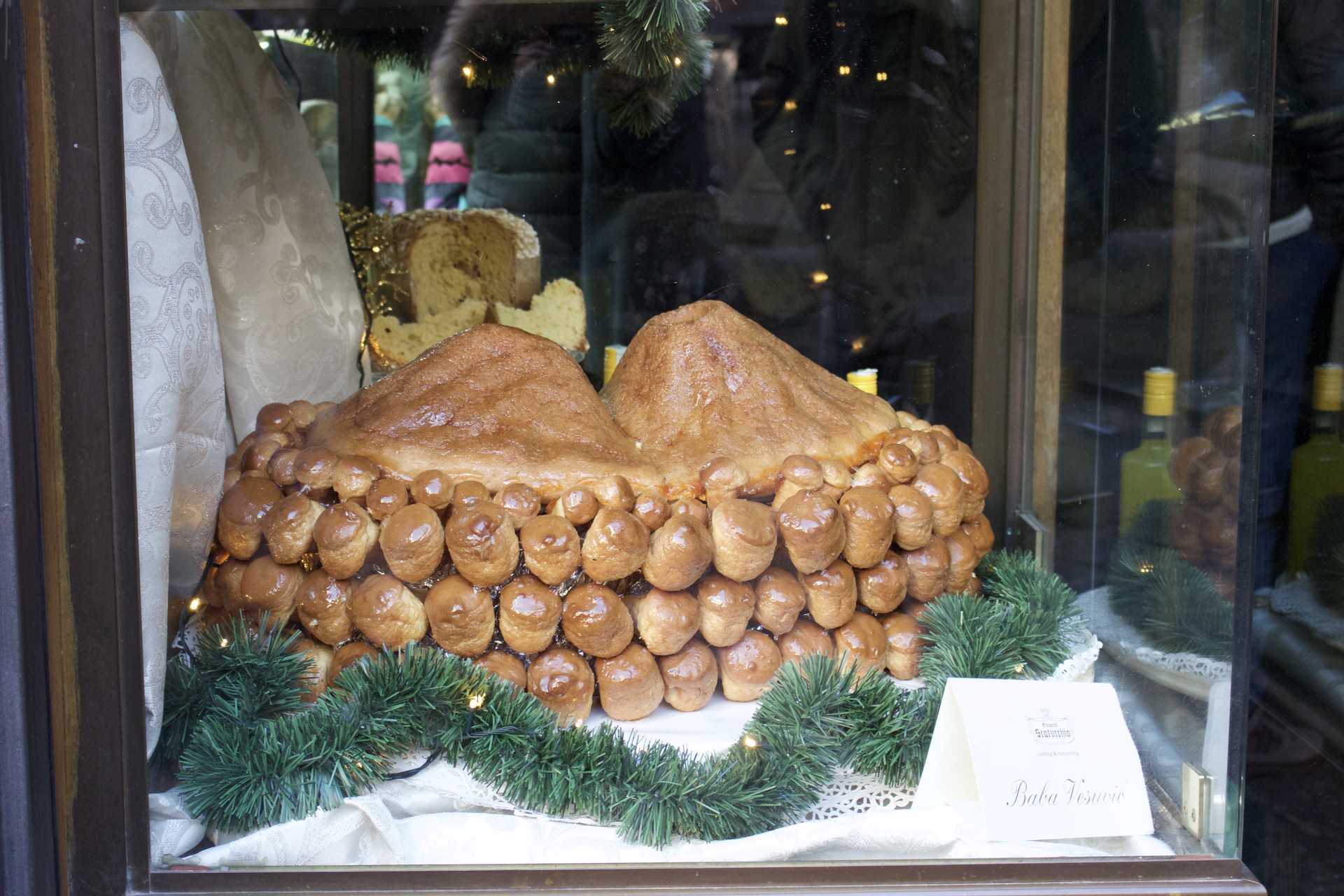Neapolitan Delicacies
Born as Parthenope and later on renamed Neapolis in Ancient Greek times, Naples is among the oldest and most actively, continuously inhabited cities in Europe and the world. Founded in the eighth century BC, Napoli has lived through the Greek, Roman Empires, the Napoleon Parthenopean Republic and ultimately served as the capital of The Kingdom two Sicilies. This rich and diverse past has led Naples to become a key economic, cultural, political and religious centre throughout its history, an importance which is still reflected in contemporary and multicultural city of today.
Typically remembered for the beautiful Gulf of Naples, decorated by the Vesuvius volcano, Napoli is today’s third largest city in Italy and has the largest old town/historic centre in Europe, recognized as a World Heritage Site by UNESCO, which is still active and offers a unique variety of hand crafted artefacts, street food and live traditional performances.
Because of its continuous habitation for over 25 centuries, and its leading role in the Kingdom of Two Sicilies which lasted until the Italian Unification in the 19thcentury, Napoli and Neapolitans emerged as a unique and distinguished culture, entity and people, nevertheless proud of the various Mediterranean influences which have shaped the city and its population over the years.
Hence, Naples has many spheres in which it demonstrated a history-rich excellence, but we’ll talk about the important things first: food. Indeed, many famous products originate from Naples and its surroundings, such as the Buffalo Mozzarella, which is awarded with the DOP - Designation Protected of Origin trademark. The Buffalo Mozzarella is mostly produced north of Naples, and throughout many years, many people have created some incredible recipes with this amazing “cheese”. It can be eaten in all kinds of ways: alone for the purists, in pasta or gnocchi “alla sorrentina”, fried “in carrozza”, smoked as a “provola”, in salads such as the “caprese”, but most famously, on the pizza.

Also born in Naples is the famous Neapolitan Pizza. The first real Italian pizza dates back to the seventeenth century when the chefs were looking for a way to improve the flavour of flatbread. Therefore olive oil, garlic and other basic ingredients were added on to flatbread. It was only in the mid nineteenth century however when the first real pizza with tomatoes appeared. In 1889, King of Italy Umberto I and his wife Queen Margherita visited Naples. During their visit, Raffaele Esposito (the top Pizzaiolo at the time) made them three Pizzas. The one the queen tried was tomatoes, mozzarella DOP and basil, with the three colours portraying the flag of Italy. She loved it so much that the Pizza was named after her.
The Neapolitan pizza also has a quality and origin guarantee, called “controlled origin”, and “Pizzaiolo”s are so proud of their product that they want to forbid imitations across the world. It takes a delicate balance and harmony of ingredients, methods and expertise to bake the perfect pizza: a hand crafted wood oven 400 degrees, San Marzano tomatoes of the Campania Region, flour type 00, and of course the love and passion of the pizzaiolo.
While Pizzas across the world, especially if claimed Neapolitan, can be priced at over 15, 20 if not 30 euros is some places, Neapolitan pizza is traditionally a very modest meal, and usually costs anywhere around 3. 50 to 5 euros (This price can be extended to 10-13 maximum in top quality restaurants).
In fact, a common form of Pizza is “a portafoglio”, which translates into “wallet” because it can be bought on the street to go, and is folded in two or four to be eaten on the spot.

Although it is highly debated, it is said that the best pizzeria in the world is in Caiazzo, around 48 km from Naples. This Pizzeria is called Pepe in Grani, a restaurant that uses the most prestigious ingredients from all over the country such as mozzarella di Bufala, olives, sardines, prosciutto, Grana Padano etc. In order to get a seat here however you must reserve well in advance because it is usually fully booked. To reserve a place check out their website: Pepe in Grani
Nevertheless, there is a very similar alternative to this high quality restaurant called 50 Kalò in Mergellina. Unfortunately they do not accept reservations so just show up and hope for the best!
Now, I mentioned this new concept of gastronomical pizzas which has emerged in the last 10 years, nevertheless, the more traditional and antique pizzerias are equally world-class, and your best guesses to eat in an old-fashioned Neapolitan restaurant would be Bellini in Piazza Bellini (this was one of the favourite restaurants of the Football Star Diego Maradona during his career at S. S. C Napoli, and also offers an incredible pasta with seafood “al cartoccio”, which means its final cooking stage is in the oven, wrapped in tin foil to preserve the flavours and aromas). Another famous place to eat for pizzas is the Sorbillo Pizzeria, which offers you one of the best pizzas in the city, to be eaten on the “Lungomare” which is the seaside, offering you a warm sunlight and a breath-taking view on Capri and the Castel Dell’Ovo.
As you might have imagined, blessed with an incredible coast and Gulf, Napoli is also famous for its unique seafood. One of these specialities is undoubtedly the octopus; a traditional and classical dish is called “Polpo alla Luciana”, also called “Moscardini al Sugo” or the Neapolitan way: Purpitiell affugat. This is a very simple yet delicious recipe that includes Verace octopus, fresh regional tomatoes, chilli peppers, garlic, parsley and oil. You would be surprised at how flavoursome this dish is and I would highly recommend you trying it if you visit the city.
Another popular seafood in Naples is mussels served as “A’mpepata di Cozze”, which is basically mussels with a garlic and peppery broth and toasted bread (toasted in the grill with olive oil, garlic and oregano).
If you are looking for a truly popular, original, if not overwhelming experience, I would suggest you visit the “Trattoria da Nennella”, which is a loud restaurant located in the Quartieri Spagnoli (a very old, and popular neighbourhood in the centre of Naples, steps away from the Via Dante High Street). The best experience I ever had was in this restaurant and I remember recommending it to some friends who sent me a message straight away confirming that it was the best experience they ever had too. Because of the popularity of this restaurant you will probably have to wait a good twenty minutes for a table ( we waited 40 minutes) but it is worth every minute.
A tradition for Neapolitans is to explore the improvised fish markets appearing along the shores of the centre, notably on Via Caracciolo. Here, you will witness morning biddings where the fishermen proudly expose and playfully “manipulate” the octopus caught few hours earlier, creating a “scene” as the creatures persistently try to escape from their water tanks. I remember witnessing this last summer and as cruel as it was to see these poor creatures captured right in front of you it was also slightly entertaining.
Now what blog would this be without explaining to you the sweet delicacies of the region? Every time I come to Naples I put on around 3 kilos because the food here is like no other. If I were to talk about every single traditional Neapolitan cake the blog would never end so I will just talk about four of my favourite.
Sfogliatelle:
This traditional Italian shell-shaped pastry dates back to the seventeenth century in an Italian monastery called Santa Rosa situated along the Amalfi Coast. The kitchen lady noticed that some cooked bran was leftover and to not throw it away she added dried fruit, sugar and lemon liqueur. Thinking of a way to encompass this sugary filling she made two sheets of dough, adding some lard and white wine and made a perfect outer layer. To make the pastry more eye-catching she formed into a beautiful shape. It was only in the nineteenth century however that the shape of the sfogliatella changed into the delicate shell shape it is today. This was thanks to Pasquale Pintauro, a Neapolitan patissier who got hold of the secret Sofgliatella recipe and modified it slightly by introducing ricotta, almond paste and citron.
The Sfogliatella has two shapes today, the Riccia (shell-shaped) and the Frolla, which uses short-crust dough. If you go to Naples every single patisserie you will find these delicacies. Go to Gambrinus, the most famous of all and try them; my favourite one is the Riccia but they are both to die for.

Pastiera:
The Pastiera Napoletana is another desert that I have been dreaming of ever since I tried the first slice. Actually, that is a lie. The first time I ever tried it I did not like the taste of flowers (yes, well the cake is made of orange flower water) but my boyfriend’s mother bought it over from Italy so I couldn’t lie and say I didn’t like it. I had a second slice the following day and I have been craving this cake ever since. It became addictive and even writing about it now makes me want a slice. This Neapolitan delight is made of shortcrust pastry, ricotta, lemon, orange flower water and candied fruit. Legend has it that it was used for Pagan celebrations during the springtime and in fact it is a specialty of Easter.
Struffoli:
Struffoli are small fried balls of dough primarily mixed with honey. These little delicacies are said to have originated from the Greeks during the Partenope era. However they were continued to be produced in Naples and it is said that they were maded in monasteries by the nuns and given at Christmas time to noble families who contributed in some way to the church. Therefore nowadays the Struffolo is connected to Christmas time.
Babà al Rum:
The Rum babà is a small yeast cake soaked in syrup made of rum. It originates from Poland and was created by French patissiers under the name babka. This small cake was brought over to Naples by these French patissiers and was renamed babà. Similarly to the sfogliatella, all patisseries in Naples sell this speciality so be sure to try it when visiting the city.

Photo gallery
Content available in other languages
- Italiano: Squisitezze napoletane
- Español: Exquisiteces napolitanas
Want to have your own Erasmus blog?
If you are experiencing living abroad, you're an avid traveller or want to promote the city where you live... create your own blog and share your adventures!
I want to create my Erasmus blog! →




















Comments (0 comments)